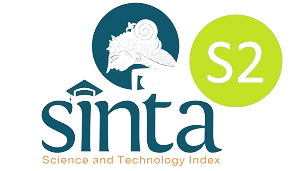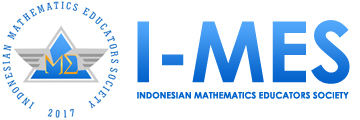Elementary teachers’ understanding of STEM integration: A study in the Indonesia – Malaysia border area
DOI:
https://doi.org/10.29408/jel.v11i2.30003Keywords:
border area, elementary school, teachers' comprehension, STEMAbstract
Science, Technology, Engineering, and Mathematics (STEM) education is vital in preparing students to face future challenges by fostering critical thinking and problem-solving skills. However, in border areas such as Indonesia and Malaysia, the implementation of STEM education remains underexplored. This study uses a quantitative descriptive-comparative design to analyze school teachers' understanding of STEM implementation. It involves 44 teachers from the Indonesia-Malaysia border area in Bengkayang Regency, West Kalimantan, Indonesia. Data were collected using a Likert-scale questionnaire and analyzed through descriptive statistics and an independent t-test to assess and compare teachers' levels of understanding. The findings indicated moderate scores for STEM knowledge (3.84), implementation practices (3.71), and school support (3.66), while challenges scored low (2.98). In terms of teaching experience, there was no significant difference between teachers with less than 10 years and those with more than 10 years of experience concerning their understanding of STEM implementation in elementary schools. This is attributed to the limited availability of training programs that could enhance teachers' knowledge regarding STEM education.
References
Agusningtyas, D., Erika, F., & Qadar, R. (2024). Analysis of teachers’ needs for interactive e-module to train critical thinking skills in the merdeka curriculum era. International Journal of STEM Education for Sustainability, 4(1), 79–96.
Arafat, M. H., Budiyanto, C. W., Yuana, R. A., & Fenyvesi, K. (2024). Implementation of integrated STEM learning in educational robotics towards 21st century skills: A systematic review. International Journal of Education in Mathematics, Science and Technology, 12(5), 1127–1141. https://doi.org/10.46328/ijemst.4271
Bharti, M. (2022). STEM education in the elementary school classroom. International Journal of Advanced Research and Publications, 5(5), 20–27. https://doi.org/10.13140/RG.2.2.21468.46726
Brody, D. L., & Hadar, L. L. (2015). Personal professional trajectories of novice and experienced teacher educators in a professional development community. Teacher Development, 19(2), 246–266. https://doi.org/10.1080/13664530.2015.1016242
Chen, Y., So, W. W. M., Zhu, J., & Chiu, S. W. K. (2024). STEM learning opportunities and career aspirations: the interactive effect of students’ self-concept and perceptions of STEM professionals. International Journal of STEM Education, 11(1), 1-21. https://doi.org/10.1186/s40594-024-00466-7
Christensen, E., & Osgood, L. E. (2024). Anxiety and self-efficacy in STEM education: A scoping review. International Journal of Changes in Education, 1(1), 41–50.
Every, E., Ball, L., & van Driel, J. (2025). Mathematics teachers’ perceptions of teaching strategies when adopting a STEM approach. Mathematics Education Research Journal, 37(1), 1–33. https://doi.org/10.1007/s13394-025-00520-9
Gunawan, G., Suhardi, S., & Makawawa, J. C. (2023). Developing picture storybook learning media in terms of students’ critical and creative thinking skills. Jurnal Prima Edukasia, 11(2), 161–175. https://doi.org/10.21831/jpe.v11i2.56795
Hasanah, U. (2020). Key definitions of STEM education: Literature review. Interdisciplinary Journal of Environmental and Science Education, 16(3), e2217. https://doi.org/10.29333/ijese/8336
Hebebci, M. T., & Usta, E. (2022). The effects of integrated STEM education practices on problem solving skills, scientific creativity, and critical thinking dispositions. Participatory Educational Research, 9(6), 358–379. https://doi.org/10.17275/per.22.143.9.6
Hu, C.-C., Yang, Y.-F., Cheng, Y.-W., & Chen, N.-S. (2024). Integrating educational robot and low-cost self-made toys to enhance STEM learning performance for primary school students. Behaviour & Information Technology, 43(8), 1614–1635. https://doi.org/10.1080/0144929X.2023.2222308
Küçükaydın, M. A., Çite, H., & Ulum, H. (2024). Modelling the relationships between STEM learning attitude, computational thinking, and 21st century skills in primary school. Education and Information Technologies, 29(13), 16641–16659. https://doi.org/10.1007/s10639-024-12492-7
Li, M. (2024). Exploring the digital divide in primary education: A comparative study of urban and rural mathematics teachers’ TPACK and attitudes towards technology integration in post-pandemic China. Education and Information Technologies, 29(10), 1913–1945. https://doi.org/10.1007/s10639-024-12890-x
Liu, F. (2020). Addressing STEM in the context of teacher education. Journal of Research in Innovative Teaching & Learning, 13(1), 129–134. https://doi.org/10.1108/jrit-02-2020-0007
Lőrincz, M., & Greba, I. (2022). Does experience matter? A comparative study of EFL teachers’ challenges. Advanced Education, 9(22), 40–54. https://doi.org/10.20535/2410-8286.255886
McKenney, S., & Reeves, T. C. (2021). Educational design research: Portraying, conducting, and enhancing productive scholarship. Medical Education, 55(1), 82–92. https://doi.org/10.1111/medu.14280
Nguyen, N. T. P., & Tran, L. H. (2024). Uncovering the challenges and requirements of elementary school teachers in implementing STEM educational activities in Vietnam. International Journal of Learning, Teaching and Educational Research, 23(6), 373–390. https://doi.org/10.26803/ijlter.23.6.17
Nugraha, M. G., Kidman, G., & Tan, H. (2024). Interdisciplinary STEM education foundational concepts: Implementation for knowledge creation. Eurasia Journal of Mathematics, Science and Technology Education, 20(10), 1-14. https://doi.org/10.29333/ejmste/15471
Ogodo, J. A. (2023). Developing STEM teachers’ cultural competence through an urban teaching curriculum: A cultural border crossing experience. Journal of Science Teacher Education, 34(3), 267–286.
Pangestu, K., Malagola, Y., Robbaniyah, I., & Rahajeng, D. (2024). The influence of project based learning on learning outcomes, creativity and student motivation in science Learning at elementary schools. Jurnal Prima Edukasia, 12(2), 194-203. https://doi.org/10.21831/jpe.v12i2.63208
Permanasari, A., Rubini, B., & Nugroho, O. F. (2021). STEM education in Indonesia: Science teachers’ and students’ perspectives. Journal of Innovation in Educational and Cultural Research, 2(1), 7–16. https://doi.org/10.46843/jiecr.v2i1.24
Pertiwi, N. P., Saputro, S., Yamtinah, S., & Kamari, A. (2024). Enhancing critical thinking skills through STEM problem-based contextual learning: An integrated e-module education website with virtual experiments. Journal of Baltic Science Education, 23(4), 739–766. https://doi.org/10.33225/jbse/24.23.739
Prodan, G., & Constantin, A. (2024). Analysis of the professionalization pathway from the perspective of pre-university teachers. Educatia 21 Journal, 28(1), 71–77. https://doi.org/10.24193/ed21.2024.28.07
Purnasari, P. D., Saputro, T. V. D., & Sadewo, Y. D. (2023). Primary teacher working group assistance in the Indonesia-Malaysia border area to design the annual work program. Dinamisia: Jurnal Pengabdian Kepada Masyarakat, 7(3), 636–643. https://doi.org/10.31849/dinamisia.v7i3.14519
Purnasari, P. D., Sumarni, M. L., & Saputro, T. V. D. (2023). Application of concrete learning media to improve mathematics learning outcomes of elementary school students. Journal of Education Policy Analysis, 1(1), 24–30. https://businessandfinanceanalyst.com/index.php/JEPA/article/view/53
Sapounidis, T., Tselegkaridis, S., & Stamovlasis, D. (2024). Educational robotics and STEM in primary education: A review and a meta-analysis. Journal of Research on Technology in Education, 56(4), 462–476. https://doi.org/10.1080/15391523.2022.2160394
Saputro, T. V. D., Purnasari, P. D., Lumbantobing, W. L., & Sadewo, Y. D. (2024). Augmented reality for mathematics learning: Could we implement it in elementary school? Mosharafa: Jurnal Pendidikan Matematika, 13(1), 163–174.
Schreiter, S., Friedrich, A., Fuhr, H., Malone, S., Brünken, R., Kuhn, J., & Vogel, M. (2024). Teaching for statistical and data literacy in K-12 STEM education: a systematic review on teacher variables, teacher education, and impacts on classroom practice. ZDM–Mathematics Education, 56(1), 31–45. https://doi.org/10.1007/s11858-023-01531-1
Sreylak, O., Sampouw, F., Didik Saputro, T. V., & Lumbantobing, W. L. (2022). Mathematics concept in elementary school: A bibliometric analysis. Journal of Educational Learning and Innovation (ELIa), 2(2), 268–278. https://doi.org/10.46229/elia.v2i2.512
Sulaeman, N., & Efwinda, S. (2022). Teacher readiness in STEM education: Voices of indonesian physics teachers. Journal of Technology and Science Education, 12(1), 68–82. https://doi.org/10.3926/jotse.1191
Tunc, C., & Bagceci, B. (2020). Teachers’ views of the implementation of STEM approach in secondary schools and the effects on students. Pedagogical Research, 6(1), 1-11. https://doi.org/10.29333/pr/9295
Wang, K. & Xiao, Y. (2022). STEM teachers’ job satisfaction: From the lens of job demands-resources. In A. Z. Macalalag, I. Sahin, J. Johnson, & A. Bicer (Eds), Internalization of STEM Education, 93-116. https://doi.org/10.3102/1571467
Waters, C. C. (2022). Exploring effective practices of an elementary STEM block program. Journal of Research in Science, Mathematics and Technology Education, 5(3), 195–225. https://doi.org/10.31756/jrsmte.532
Yang, K.-L., & Ball, L. (2024). STEM teacher education programs for preservice and in-service secondary mathematics teachers: a review study. Journal of Mathematics Teacher Education, 27(2), 185–207.
Yllana-Prieto, F., González-Gómez, D., & Jeong, J. S. (2025). The escape room and breakout as an aid to learning STEM contents in primary schools: An examination of the development of pre-service teachers in Spain. Education 3-13, 53(1), 15–31.
Zinth, J., Weyer, M., & Atchison, B. (2020). Enhancing STEM in P-3 education. Policy guide. In Education Commission of the States. Education Commission of the States. https://files.eric.ed.gov/fulltext/ED602851.pdf
Downloads
Published
How to Cite
Issue
Section
License
Copyright (c) 2025 Totok Victor Didik Saputro, Yessi Fatika Sari, Silvester, Christian Cahyaningtyas, Pery Jayanto, Grecia Putri Harmoni

This work is licensed under a Creative Commons Attribution-ShareAlike 4.0 International License.
Authors who publish with the Jurnal Elemen agree to the following terms:
- Authors retain copyright and grant the journal right of first publication with the work simultaneously licensed under Creative Commons Attribution-ShareAlike 4.0 International License (CC BY-SA 4.0).
- Authors are able to enter into separate, additional contractual arrangements for the distribution of the journal's published version of the work (e.g., post it to an institutional repository or publish it in a book), with an acknowledgment of its initial publication in this journal.
- Authors are permitted and encouraged to post their work online (e.g., in institutional repositories or on their website) prior to and during the submission process, as it can lead to productive exchanges, as well as earlier and greater citation of published work.
Jurnal Elemen is licensed under a Creative Commons Attribution-ShareAlike 4.0 International License





